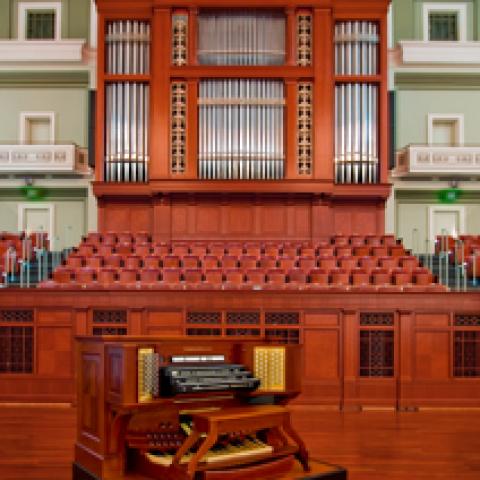Schoenstein & Co. of San Francisco has announced that the Nashville Symphony’s flood-damaged organ will be back in operation early next year.
In May 2010, the orchestra’s concert hall, Schermerhorn Symphony Center, was devastated by an unprecedented flood that within hours filled the building’s basement with roughly 24 feet of water.
The console and blowers of the three-manual, 64-rank Martin Foundation Concert Organ, built by Schoenstein & Co. and inaugurated just two-and-a-half years before, were completely inundated and declared a total loss. The organ was featured on the cover of the March 2009 issue of THE DIAPASON.
Thanks to the immediate and Herculean efforts of the symphony staff, under the direction of President & CEO Alan Valentine, the upper sections of the concert hall, most particularly the organ case, were outfitted with gigantic, temporary air-conditioning equipment to control temperature and humidity.
The primary concern was the organ, and the symphony’s fast action saved it from the devastation of heat and humidity. This also preserved the woodwork and other vulnerable elements of the hall.
The entire building, including the organ, has been monitored for temperature and humidity control around the clock ever since. For information: 707/747-5858; www.schoenstein.com.
Nashville Symphony’s flood-damaged Schoenstein organ will be operational early next year
THE DIAPASON



